#Lili Ilse Elvenes
Photo
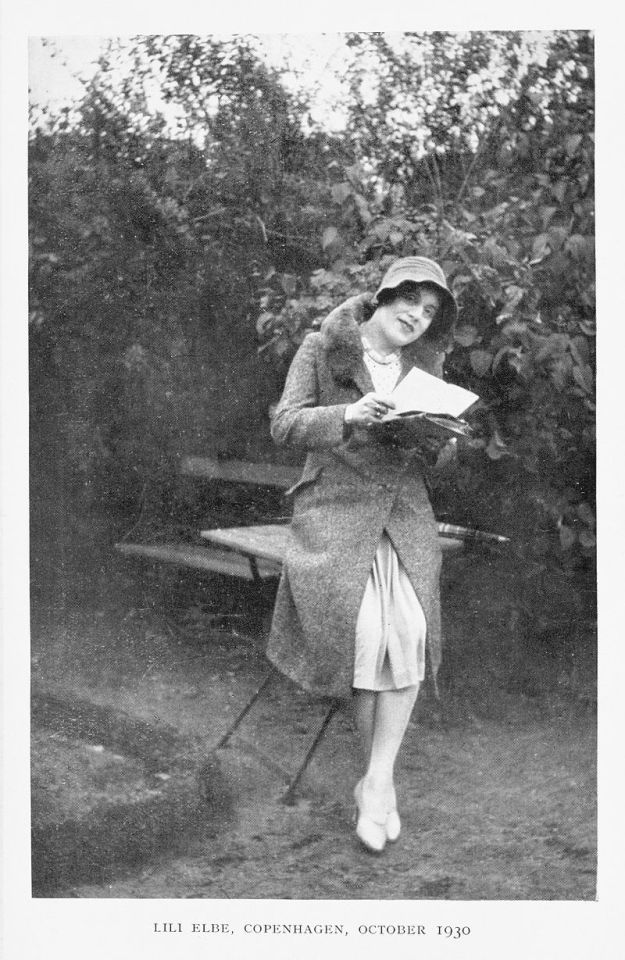
Lili Ilse Elvenes (28 December 1882 – 13 September 1931), better known as Lili Elbe, was a Danish painter, trans woman and among the early recipients of gender-affirming surgery (sex reassignment surgery).
She was a painter under her birth name Einar Wegener. After transitioning in 1930, she changed her legal name to Lili Ilse Elvenes and stopped painting; she later adopted the surname Elbe. She died from complications following a uterus transplant.
The UK and US versions of her semi-autobiographical narrative were published posthumously in 1933 under the title Man into Woman: An Authentic Record of a Change of Sex. A film inspired by her life, The Danish Girl, was released in 2015.
#Lili Ilse Elvenes#Lili Elbe#women in history#XIX century#XX century#people#portrait#photo#photography#Black and White
17 notes
·
View notes
Text
Sometimes it can be easy to forget that LGBTQ+ identities are not new to the past few decades. Finding LGBTQ+ histories can be very difficult either because it wasn't recorded or it got lost or destroyed or rewritten. A piece of queer history that we do have though is the story of Lili Elbe, the semi-autobiographical narrative was published after she died in 1933 under the title Man into Woman: An Authentic Record of a Change of Sex. The story of a transgender woman and some of the first recorded gender affirming surgeries.

This book consists of memoirs that were written by Lili during her lifetime. Before her death she had begun compiling these into a narrative with the help of Ernst Harthern. After her death the novel was published first in Germany with the help of an editor friend that published under the name Neils Hoyer. A story like this was sensational. It was so revolutionary for the time because for the first time an international general audience got an insight into transgender lives and struggles. In Germany (where Lili got the surgeries done and where her doctors came from) there were some transgender publications such as newspapers and magazines but they were few and far between and weren’t widely circulated. They functioned more as a way to spread information between who was already in the community rather than outreach to the world.
Whether or not going in the readers supported transgender rights and movements, lots of people had a burning curiosity about the medical aspects of a procedure like this. Which again, was REVOLUTIONARY at the time. There had been a rising interest in gender affirming procedures since the beginning of the 1900’s. Most of this audience wanted to know about the medical advancements rather than the psychology surrounding transgender individuals at the time.
So to get into who she actually was: Lili Ilse Elvenes was born in 1882 in Denmark as Einar Wegener and was a moderately successful painter married to fellow painter Gerda Gottlieb. She began her transition in the 1920’s. By the 1930's this woman was not only able to transition socially, but was able to get gender affirming care. She managed to get her name legally changed, she got her passport changed to reflect that she was a woman, and she was one of the very early cases of a medical sex change. Lili had the first recorded uterus transplant as she wanted to become a full woman and be able to bare children. (As was the social expectation and ideal of women at the time) Not long after her surgery she died due to complications relating to organ rejection.
The beginning of Einar’s transition into Lili actually began because of her wife. Her wife was basically like “hey I need a female model and I think you would be beautiful as a woman. Here dress up as a woman to model for my paintings” Which Einar ended up greatly enjoying and discovering this other side of themselves. One thing led to another and Einar started to go out in social settings cross dressing and trying to pass as a woman. The couple moved to France as it was easier for Lili to exist there. France being what it was at the time masculine fashions and silhouettes were IN so that helped her fit into society. Lili felt this war and dichotomy between her male side and female side, probably so harshly because of the social gender divide that was wider than ever following WWI and the tensions between women who had stayed on the home front and men who had gone to war. She felt like the woman had won and if she couldn’t live as a full woman she didn’t want to live.
Doctor Magnus Hirschfeld was the guy who really made Lili Elbe’s transition possible. He was a German doctor and sexologist and literally wrote the book on transgender people and coined the term transvestite. He was the one who introduced Lili to the doctors that would perform her gender affirming revolutionary surgeries. In Wiemar run Germany where she got her surgeries you could cross-dress in public and get cross dressing certificates, as pre Nazi Germany was surprisingly progressive and was even looking to decriminalize homosexuality until the Nazi’s took control. Germany had housed Hirschfeld’s research institute which held Lili Elbe’s medical records, all of which were lost due to Nazi students burning the institute down.
Now because of the loss of these medical records, we can’t be certain of the realities of Lili Elbe’s medical history and therefore what parts of the narrative presented in her biography are factual and what was edited to make a more compelling and acceptable narrative for the general public. As much as I want it to be, this book isn’t a perfect representation. Many of the actual medical details have been obscured and put into euphemisms. Everyone involved in this story was given pseudonyms so it's hard to cross reference accounts. It was made for a larger audience and likely wanted to reflect the sort of ideal scenario that didn’t push the boundaries or what they believed was moral. We don’t know for sure if Lili was intersex or not or the exact details of her transition due to her medical files being destroyed. It is likely they over exaggerated the biological aspect of her story because that was the only way being transgender could be accepted in those days. Performing gender affirming surgery on someone who was already halfway to the opposite sex biologically was much more acceptable than changing a fully biological man into a woman. The psychological reasonings behind and studies of transgender identities was less accepted and explored at the time.
Most importantly, nothing was published until AFTER she had died so she didn’t even get final say on anything got left in or taken out of or edited within the narrative. This book has also been translated many times so even if her story was more or less accurately depicted at first, the translators writing for an English speaking British and American populous likely took liberties to censor and reword to fit the expectations of the audience they were writing for.
When examining LGBTQ+ histories, it is so important to understand the context of what we are researching and how that changes how we interpret the source material. Lili Elbe’s story is an important part of history that deserves to be known and explored, just with an awareness of its context. She was able to open many peoples eyes to the transgender experience and her story inspired the well known 2000's novel, The Danish Girl, which was later made into a film of the same name.
To end off here is a portrait of Lili Elbe painted by her wife:

P.S Once Lili was legally recognized as a woman her marriage with Gerda had been made null and void, both went on to marry men
0 notes
Text
LILI ELBE
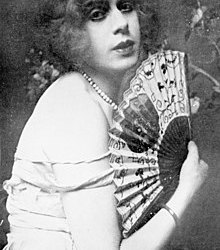
Lili Ilse Elvenes, better known as Lili Elbe, was a Danish painter and transgender woman, and among the early recipients of sex reassignment surgery. Lili Elbe, birth name Einar Wegener, Einar also spelled Ejner was a danish painter who was assigned male at birth and experienced what is now called gender dysphoria, and underwent the world’s first documented sex reassignment surgery.
The first of five highly experimental surgeries that Elbe underwent was performed in 1930. Preceding the surgery, which was performed by German gynecologist Kurt Warnekros, she was examined by German physician and sexuality theorist Magnus Hirschfeld. The series of operations removed her testicles and penis and then transplanted ovaries and a uterus into her. She died of complications not long after the fifth procedure in 1931. Before she underwent her first surgery, it had been determined by her physicians (possibly by Hirschfeld) that Elbe had more female than male hormones and likely had what is now known as Klinefelter syndrome, a disorder of the sex chromosomes that occurs in males. The story of her transition was published shortly after her death (with pseudonyms applied to all people named in the book) and has since been retold in The Danish Girl (2000), a novel by David Ebershoff, and a major feature film by the same name (2015) starring Eddie Redmayne.
0 notes
Photo

En 1931, Lili Elbe se fait passer pour morte aux yeux du monde. Elle rejoint un groupe d'investigateurs qui se sert de l'Institut comme couverture pour résoudre des enquêtes dont la police ne veut pas entendre parler...
La fiche de perso : https://scriiipt.com/download/53991/
2 notes
·
View notes
Photo

waddup Lili
4 notes
·
View notes
Text
TERFs: “tRaNsGeNdErIsM iS a mOdErN dAy tReNd!!”
Actually, Lili Ilse Elvenes - better known as Lili Elbe - was a trans woman and one of the earliest recipients of sex reassignment surgery in the 30s but was dressing and living as a woman as early as 1912. She was the subject of many paintings by wife, Gerda Wegener (née Gottlieb).
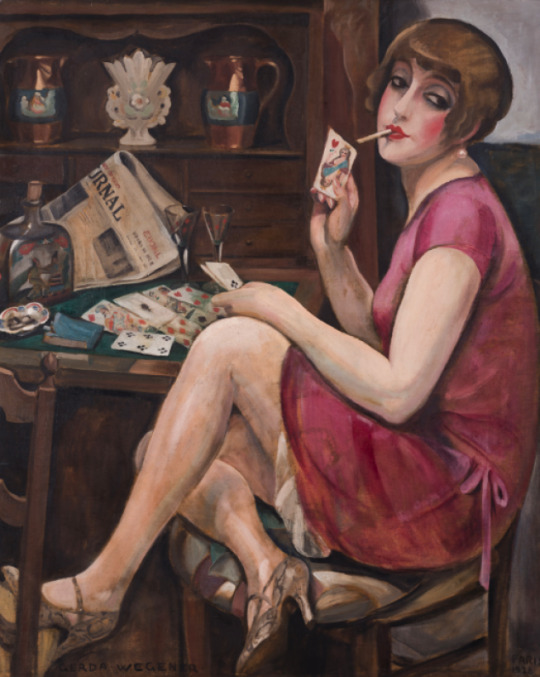
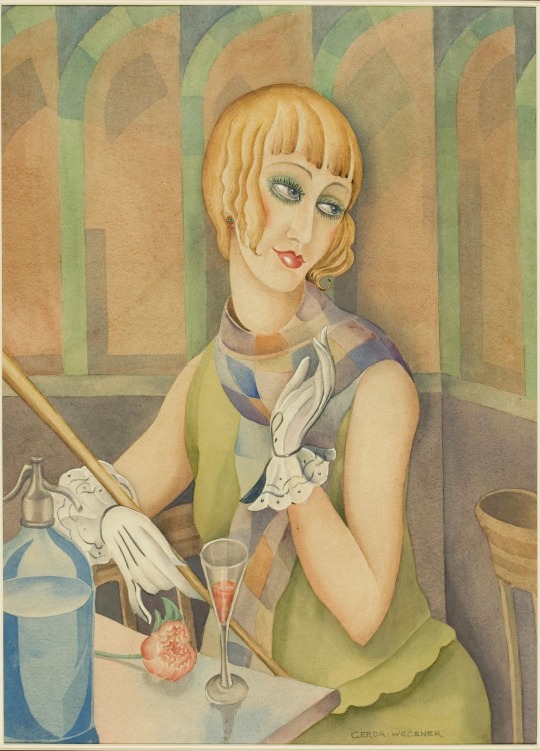
#lili elbe#trans rights#trans women are women#anti radfem#anti terf#transgender rights#the danish girl#gerda wegener
728 notes
·
View notes
Text
February 18, 2021: The Danish Girl (Review)
Before I go into ANYTHING else...let’s talk about the actual Danish Girl, Lili Elbe, or Lili Ilse Elvenes.
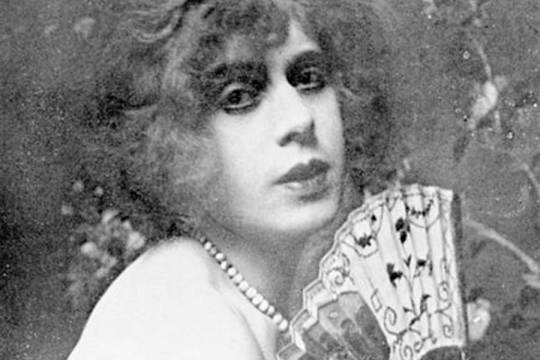
Oh, uh, full warning, this is gonna be LONG, so skip to the bottom if you’re just here for the Review! OK, history time!
Now, what the film The Danish Girl notes about the beginning of the transition is pretty spot-on, from what I can tell. After marrying portrait painter Gerda Gottlieb in 1904, the two lived in Italy and France before moving to Paris in 1912. Yeah, that’s over 14 years before they’re shown doing so in the movie. Inaccuracy #1. In 1908 (here comes number 2), Elbe (Einar at the time) painted this portrait of trees along a fjord in Denmark.

Yeah, NOT in 1926, as the film says. But, yeah, that’s a nitpick, I recognize that. Anyway, the revelation came when model Anna Larssen (not “Ulla”, which is Inaccuracy #3) was late, and Gerda asked Elbe to fill in. When Larssen eventually showed up, she suggested the name “Lili”. Basically, this scene from the movie was pretty goddamn accurate.
Except for the dates, anyway. Because while the movie mostly takes place around 1926 and afterwards, this probably happened closer to 1920, in Paris. So, yeah, Lili spent a LOT more time as Lili in real life. Additionally, Lili was pretty goddamn public about the whole thing, inviting guests and hosting parties as herself, rather than as Einar. At the same time, Gerda was getting pretty goddamn famous for her paintings of Lili, like this one.
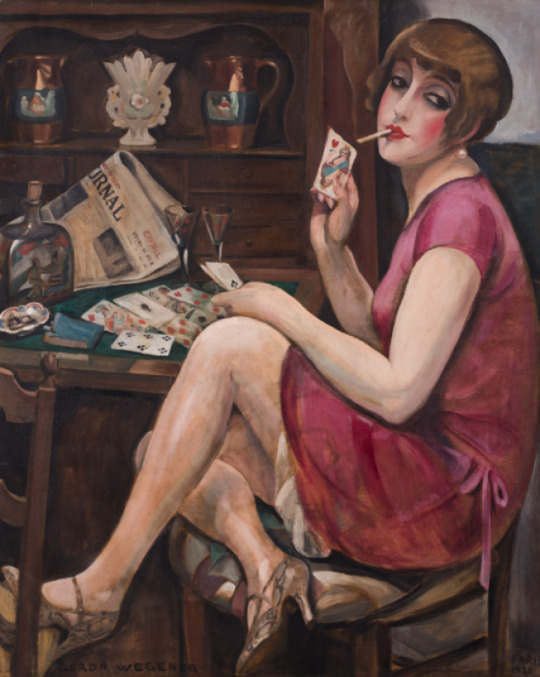
Which, yeah, are really good! Also, they were considered lesbian erotica by many! YEAH! And here’s a fun fact: Gerda may not have been straight-up straight. Yeah, the film and the book (we’ll get there) kind of ignored the fact that their marriage was annulled by the Danish government, not by the two of them. Inaccuracy #4. Now, obviously, their relationship ended, and Lili ended up getting together with a man (we’ll get there, too), but there are a LOT of unanswered questions about Gerda’s sexuality, and views of sexuality (which is barely hinted at in the “male gaze” speech in the beginning).
After the annulment, the two just...drifted apart. Their relationship dissolved, and the details on that are fuzzy. By 1930, Lili was headed on a completely different path. She wasn’t a painter like Einar (and it turns out that she thought of them as two entirely separate people, like two souls living in the same body, which the movie got mostly right), and she was mostly unsatisfied with her career, life, and other things. And that is where Drs. Erwin Gohrbandt and Magnus Hirschfeld come in, NOT Kurt Warnerkros...yet. He’d come in for the other five (YES FIVE) surgeries, but wouldn’t be involved with the first. Inaccuracy #5, and also #6, while we’re at it! See, the film would make you think that Lili was the first complete gender reassignment surgery, but she was actually the second. The first would be Dora Richter, in a procedure that was performed by Dr. Hirschfeld from 1922 - 1931. YEAH. BIG-ASS INACCURACY THERE. Here’s Dora, by the way:
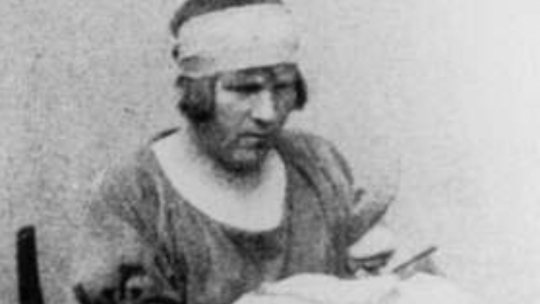
Anyway, Lili had her first procedure, to remove the testicles, performed in 1930. In the same year, the divorce between Lili and Gerda was finalized, and Lili legally changed her name. Two more procedures were performed, the first to implant an ovary, and the second to remove the penis and scrotum. Inaccuracy #7, by the way. And, hey, let’s go for number 8! Let’s talk about Henrik, a dude who didn’t exist. He and Hans were both very loosely based on an art dealer named Claude Lejeune.

Claude was an art dealer (there’s the Hans part), and was indeed in love with Lili. They got together around early 1931, and he’d actually been in love with her for a good, long time. He proposed to marry Lili, and she accepted, also hoping that the two would be able to have children together. But to do that, it was believed that Lili would need a uterus. And, obviously, having children would be MILES more complicated than that in basically EVERY way, but this was early in medical science’s understanding of some of that biology.
In any case, however, Lili would need both a uterus and a vagina to feel whole. And so, the fourth surgery was scheduled. And she had that surgery in 1931, a couple of weeks after Dora Richter successfully had the same surgery performed. But, sadly, Lili wouldn’t be so lucky.
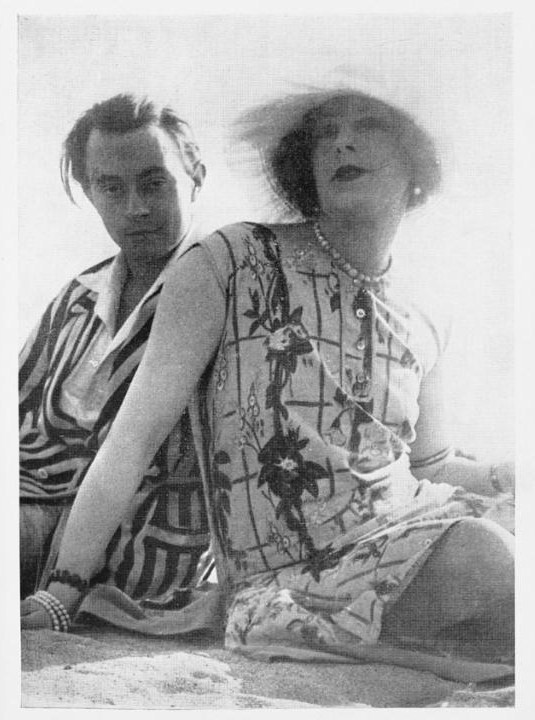
Lili’s body rejected the uterus, and while transplant rejections of any kind wouldn’t necessarily be fatal now, they definitely were back then. They attempted to remove it, but that subsequent 5th surgery caused infection, which caused a fatal heart attack three months later. Lili Elbe died on September 13, 1931, at the age of FORTY-EIGHT. Yeah, Inaccuracy #9.
By the way, you may be wondering: what about Dora Richter, the first successful person to get these surgeries? Well, she disappeared...in Germany...as the Nazis were coming into power...yeah. Fuckin’ YIKES.

And so, that’s the true story of Lili Elbe. And there are far more differences than that, I’m sure, but those 9 inaccuracies aren’t insignificant, that’s for sure. Although, it probably doesn’t help that the movie was based on a fictionalized book.
Oh, uh...did I not mention that? Yeah, this movie is based on The Danish Girl, by David Ebershoff, which means that this film is essentially a cinematic game of telephone. Which, uh...not great. Granted, Ebershoof made some other...interesting changes, which the film didn’t inherit. In the book, for example, Gerda is named Greta, and is American? Um...why? I dunno, it’s kind of weird. Oh, and that’s not including one more issue with the movie. But, you’ve waited long enough, huh? Recap of the film is here and here if you wanna check that out! Let’s get to the Review already!
Review

Cast and Acting: 8/10
I am...conflicted. So let me start here by saying that the acting in the film in and of itself is fantastic, all-around. Not a weak actor in here, that’s for sure. Let’s start with the side-roles, for once. Ben Whishaw, Matthias Schoenaerts, and Amber Heard are all good. Heard’s accent is a little shaky, but they’re still all solid performances. OK, how about Alicia Vikander? She’s great! And she won the Oscar for...Best Supporting Actress. Um...wait...Supporting? But not Best Actress? Uh...OK. That’s a little weird, let’s be honest here. But, Alicia Vikander did deserve that win over...oooooooh, Rooney Mara in Carol? Maybe not...damn.
And OK...let’s get into the elephant in the room, huh?

Eddie Redmayne is fantastic as Einar Wegener/Lili Eber, and I genuinely think he had a great shot to win Best Actor...but, yeah, Leonardo DiCaprio definitely deserved it, I think that goes without saying. Hell, that year had a SOLID line-up for best actor. And Redmayne had even won it the year before for The THeory of Everything, another biography where he played Stephen Hawking. But ALL of that said...HNNNNNNNNNG, there should have been a transgender actor cast in this role, ideally. Now, I’m fully aware how difficult that would be, as Hollywood isn’t extraordinarily diverse in terms of including trans actors in massive mainstream projects. It’s better now, but it’s nowhere near ideal. But if anybody knows an actor who would’ve fit this role and performed it well, I’m DEFINITELY interested. So, despite that controversy, Redmayne was pretty goddamn great in this role. But, uh...that doesn’t mean everything is perfect...

Plot and Writing: 5/10
OK, that seems low, I know. But it’s pretty goddamn damning that this movie was based off of a heavily fictionalized book instead of the actual life story of Lili Eber and Gerda Gottlieb. And because of that, there are not only some missed opportunities, but some straight-up damning inaccuracies. That’s a set of pretty poor decisions, I tell you what. Not sure why Lucinda Coxon came to that decision when adapting this screenplay, but it wasn’t exactly nominated for Best Screenplay. And the writing certainly isn’t bad, but it is...overly saccharine sometimes, especially for a film based (loosely) on a true story. I dunno...just not the best set of choices here, sorry to say.

Directing and Cinematography: 8/10
Tom Hooper shouldn’t direct musicals. However, since this wasn’t a musical, directing and cinematography here is pretty damn good! Real talk, this is a gorgeous looking movie, and the way shots are framed are fantastic. Perfect? Weeeeeeeell...given the fact that painting is a main focus of the film, for both Gerda and Einar, there should’ve been more painter-quality shots in here, I think. And while the cinematography by Danny Cohen is pretty fantastic, I can’t say that it’s perfect. Still, in terms of lighting and general skill, it’s still quite a good looking movie.

Production and Art Design: 10/10
But the deficiencies in the direction are EASILY compensated for by the production design! Like, hot DAMN, this is a good looking movie, like I said! That goes from the construction of the sets, to the gorgeous outfits all over the place, especially Lili’s outfits. Some iconic pieces of wardrobe there, that’s for sure! But if I have ONE complaint...this movie never once felt like the 1920s. Yup, good old anachronistic complaints from me again! Yeah, I’ll change the record one of these days, I promise. But even with that, it’s hard to ignore just how good this movie looks, to be honest. It’s just...gorgeous.

Music and Editing: 8/10
As I type this, I’m listening to a track of the film on YouTube, and it is a beautifully delicate tune. I’m not sure that I’d be able to associate it with the film if presented to me on its own, but it’s definitely a nice track to listen to by itself. Playlist worthy? For somebody, almost certainly, but not for me. One of these days, a film like that’s gonna pop up, I swear. But for now, Alexandre Desplat and his score are gonna stay off my iPhone. This really is a nice score, though, I promise. Editing by Melanie Ann Oliver is pretty good as well, and I’ve no complaints about it, to be honest. Overall, this side of things was quite nice, if not the most notable thing I’ve ever seen or heard.

I might have been a little harsh, but it’s still got an 78%.
This is a good movie, but...I dunno, the inaccuracies do bug me. Hell, there are WAY more than what I’d mentioned, and I mentioned a lot. Not to mention the other glaring issue: no trans people at any stage of the production? Really? No script consultants, no writers, no NTOHING? That’s...egregiously bad. Like, holy shit, guys. And, yes, this includes Redmayne, because even though he performed admirably in the role...I dunno. I’m no expert on ANY of this, as a cissexual dude with cissexual experience, but it feels a little...reductive, is all. Like I said, if any other actors have been suggested for this role, I’d love to know. The whole thing feels...I don’t know, just not great.
And by the way, that’s without even TOUCHING the question as to whether or not this film is authentic to the trans experience. Again, I have ABSOLUTELY NO IDEA, but I’ve also heard that this film isn’t universally acclaimed in the trans community, so to speak. And I’m definitely interested in the reasons for that. All I know is this: from the perspective of a complete outsider, I was intrigued by this films view of the transgender experience, specifically as seen in the earliest days of those realizations happening and being publicly known and reported on. And that’s all I can really comment on, in truth.

WHOOF. That was a goddamn topic, huh? And now, I’m going to continue on the the month of romance with...wait, the 19th is my 5-year anniversary with my GF, pictured here:

Ravishing. Anyway, I think I’ll let her pick from my choices for this next one. Hold on a sec...OK, then. Sing it with me now! AND DO I DREEEEEAM AGAAAAIN, FOR NOW I FIIIIIIIIIIIIIND...

February 19, 2021: The Phantom of the Opera (2004)
#the danish girl#tom hooper#david ebershoff#eddie redmayne#lili elbe#einar wegener#alicia vikander#gerda wegener#ben whishaw#sebastian koch#amber heard#matthias schoenaerts#romance february#romance film#LGBT film#user365#365 movie challenge#365 movies 365 days#365 Days 365 Movies#365 movies a year#usersophie#userel
97 notes
·
View notes
Photo

Lili Elbe (Danish, 1882 - 1931): The poplars along Hobro Fiord (1908) (via Bruun Rasmussen)
From Wikipedia:
Lili Ilse Elvenes, better known as Lili Elbe, was a Danish painter and transgender woman, and among the early recipients of sex reassignment surgery. She was a successful painter under her birth name Einar Magnus Andreas Wegener. After transitioning in 1930, she changed her legal name to Lili Ilse Elvenes and stopped painting; she later adopted the surname Elbe.
#Lili Elbe#Einar Wegener#danish painters#trans painters#trans artists#women artists#women painters#art#painting#landscape
136 notes
·
View notes
Text
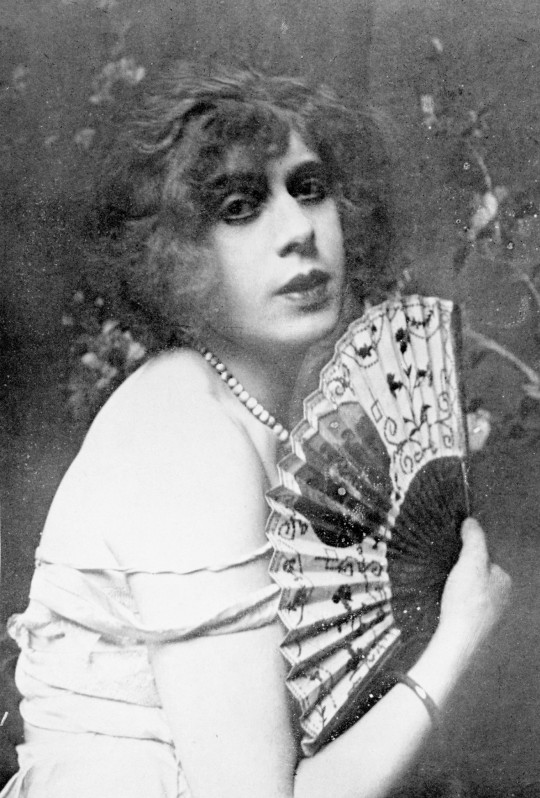

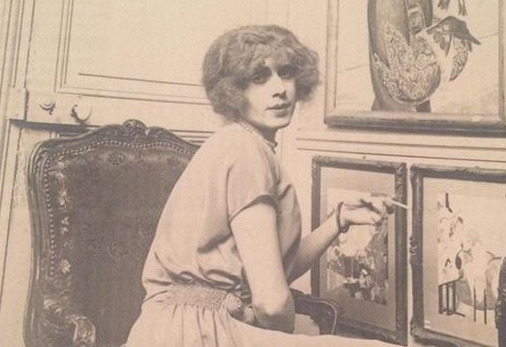
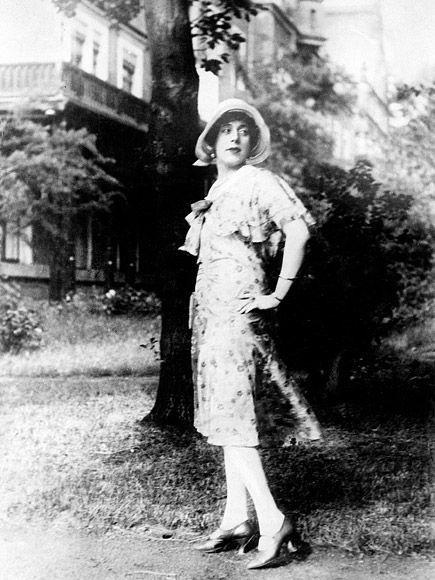
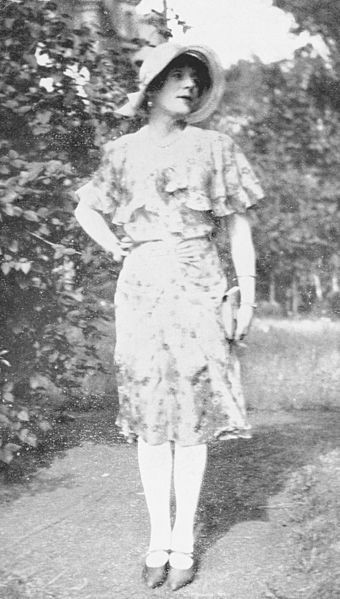
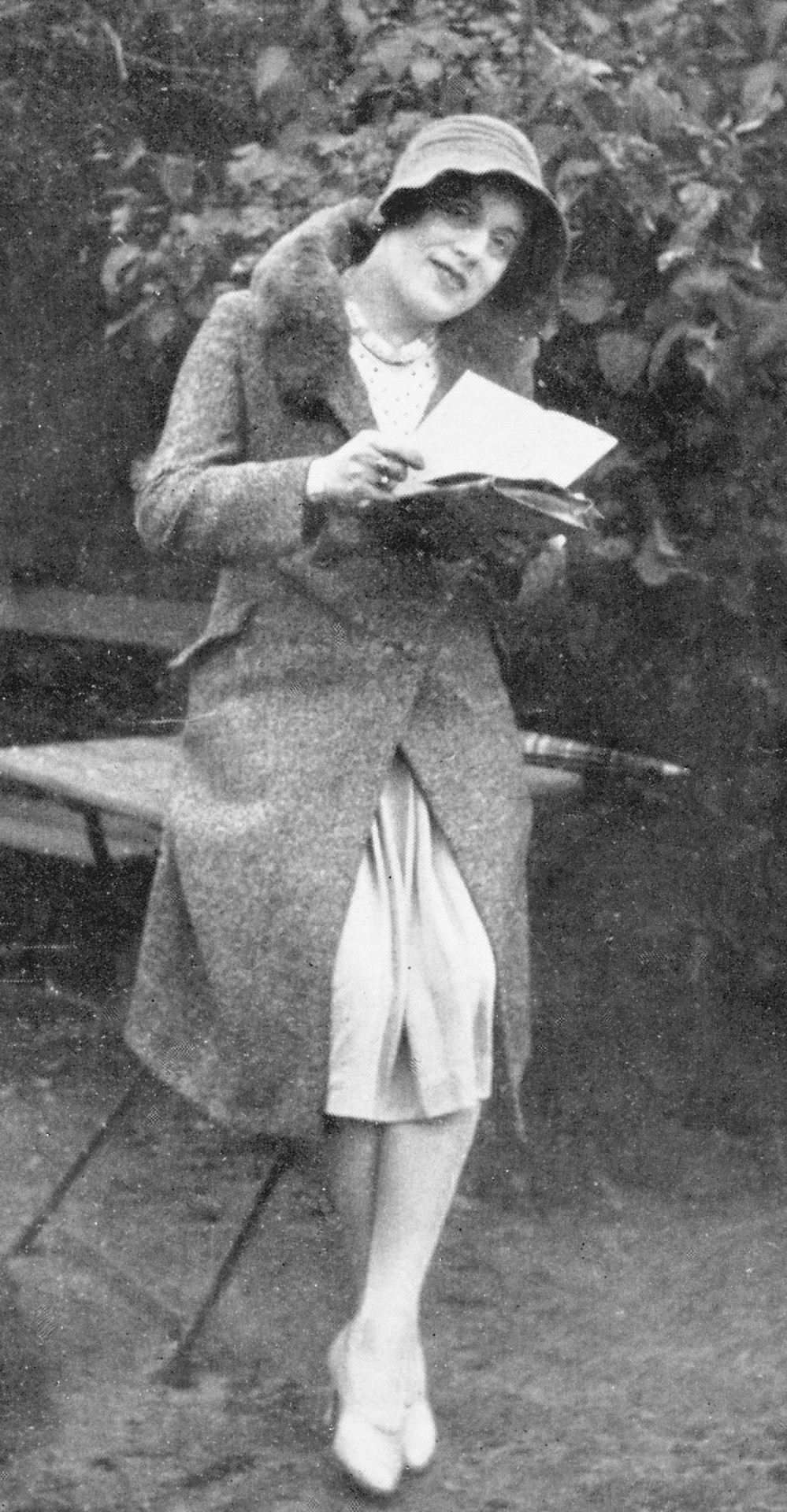

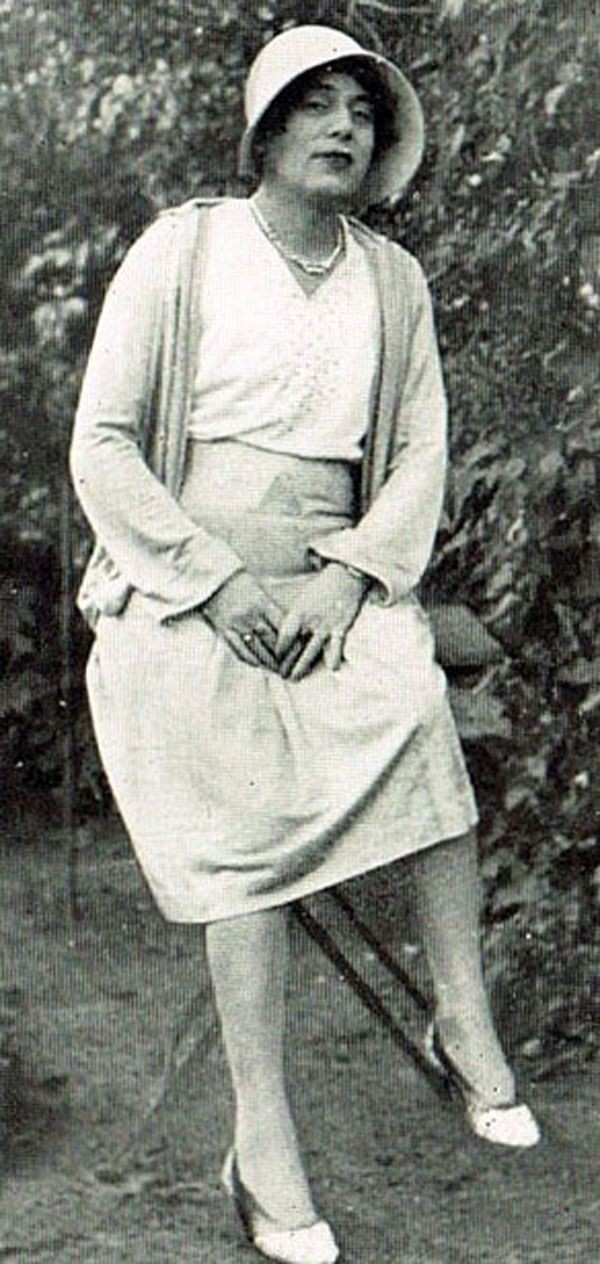
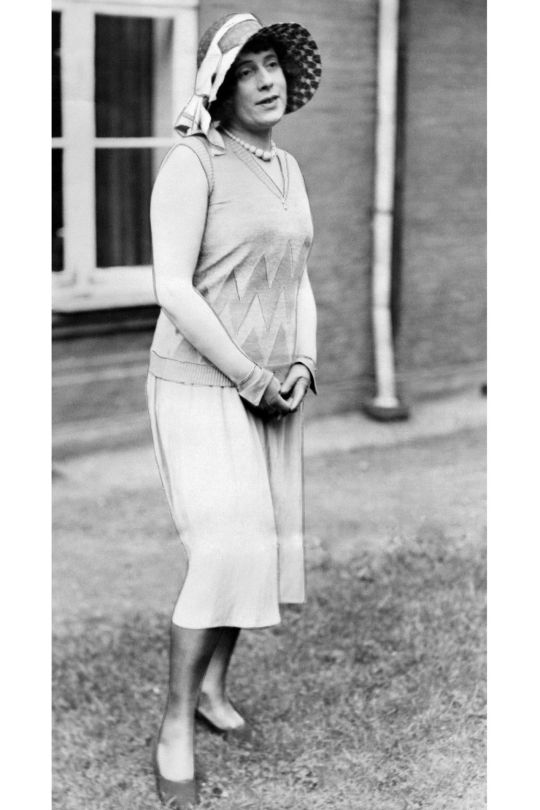
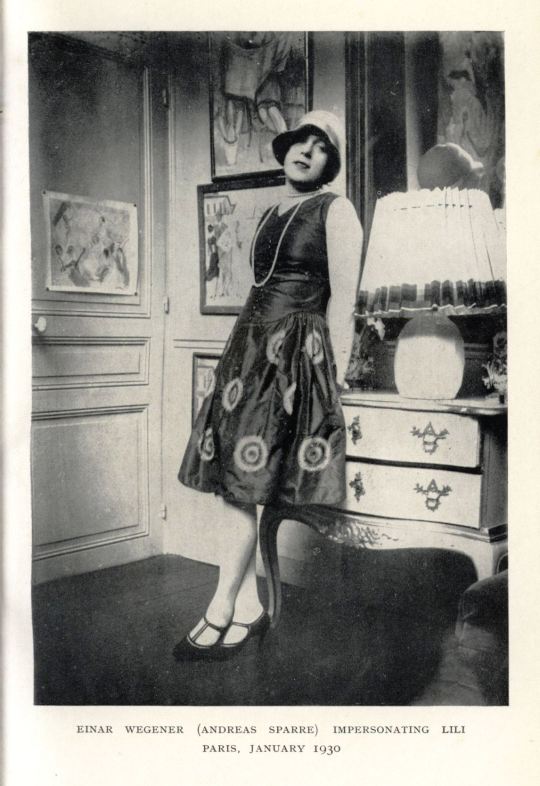
Lili Elbe (1882-1931).
Danish artist.
.
She was a Danish transgender woman and among the early recipients of sex reassignment surgery.
.
Elbe was born Einar Magnus Andreas Wegener, and was a successful painter under that name. After successfully transitioning in 1930, she changed her legal name to Lili Ilse Elvenes and stopped painting altogether. The name "Lili" was suggested by a friend, actress Anna Larssen. Later in her life, Lili chose the surname "Elbe", inspired by the Elbe River in Dresden. She died from complications involving a uterus transplant. Her autobiography Man into Woman was published posthumously in 1933.
.
She was married to Gerda Gottlieb. According to the book Elbe wrote—though it was credited to her friend Ernst Ludwig Hathorn Jacobson under the pseudonym Niels Hoyer—about her transition from man to woman, she realized her true gender identity when Gerda—a successful painter and fashion illustrator (as well as illustrator of lesbian erotica)—asked her then husband to don women’s clothing and sit as her model. Wegener was her regular model thereafter. The couple eventually moved to Paris, where Wegener felt free to appear in public sometimes as Einar Wegener and sometimes as Lili Elbe. Once Wegener began to transition into a woman, she and Gerda had their marriage annulled.
.
It is speculated that Elbe was intersex, although that has been disputed. Before she underwent her first surgery, it had been determined by her physicians (possibly by Hirschfeld) that Elbe had more female than male hormones and likely had what is now known as Klinefelter syndrome, a disorder of the sex chromosomes that occurs in males.
[Submission]
#lili elbe#danish girl#transgender#lgbt history#lgbtq#women history#women in history#herstory#art history#art#1930s#1920s#history lover#history nerd#history crush#history hottie#history lesson#history buff#historical babes#historical hottie#historical figure#historical#historic
222 notes
·
View notes
Photo
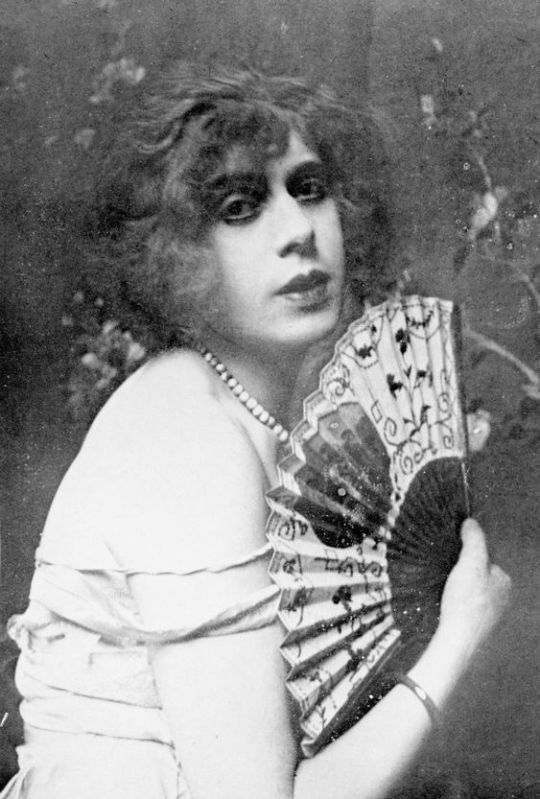
Lili Ilse Elvenes (28 December 1882 – 13 September 1931), better known as Lili Elbe, was a Danish transgender woman and among the early recipients of sex reassignment surgery. Elbe was born Einar Magnus Andreas Wegener, and was a successful painter under that name.
46 notes
·
View notes
Text
Telex: Száz éve is voltak nemváltó műtétek, és nemcsak nyugaton, de nálunk is
Két év alatt négy operációt végeztek el a férfin. Először eltávolították a heréit, másodszorra petefészket ültettek be. A harmadik beavatkozás során eltávolították a péniszét és a herezacskóját.
Új személyazonossága révén hivatalosan is felvehette a Lili Ilse Elvenes nevet. 1930 végén elvált feleségétől is, ami nem volt egyszerű, lévén házasságkötése óta más lett a neme és a neve is. Végül maga a dán király érvénytelenített a frigyet egy külön rendeletben. A pár a válás után is közeli kapcsolatban maradt, annak ellenére is, hogy Lili beleszeretett egy műkereskedőbe. Házasságot tervezett, gyereket akart szülni, ennek érdekében 1931-ben a negyedik műtétje során méhbeültetést hajtottak végre rajta, illetve hüvelycsatornát alakítottak ki. Szervezete azonban rosszul reagált, kilökte a beültetett méhet, a műtét helye pedig elfertőződött. Lili Elbe 1931. szeptember 13-án, három hónappal a műtét után meghalt.
1 note
·
View note
Text
Lili Elbe
Lili Elbe (or Lili Ilse Elvenes) was born in Denmark on the 28th of December 1882 and is renowned as one of the first transgender women to receive sex reassignment surgery. Lily passed in the September of 1931 after a failed uterus implant attempt.
She married her wife Gerda Wegener in 1904 while at college. Lily, alongside her partner Gerda, was a painter. She painted throughout her life until her transition in 1930.
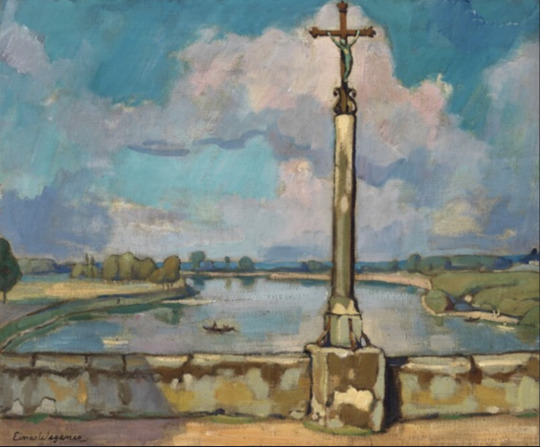

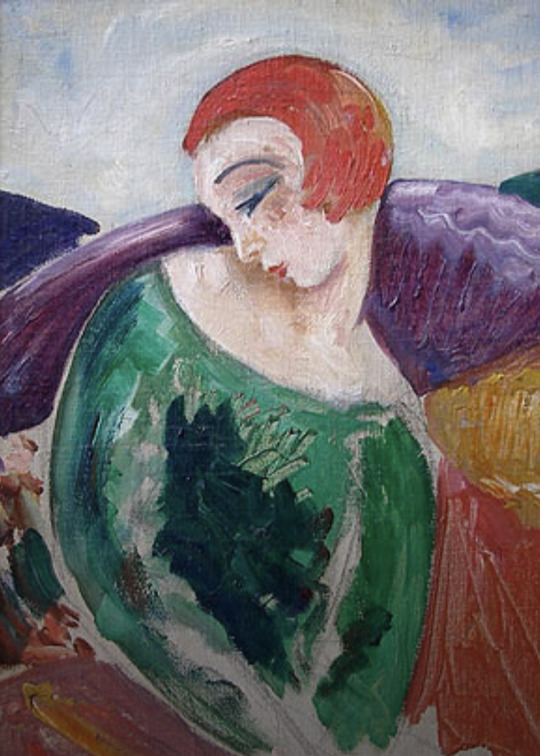
1 note
·
View note
Text
Lili Ilse Elvenes
Lili Ilse Elvenes, plus connue sous le nom de Lili Elbe (28 décembre 1882 – 13 septembre 1931), est une artiste peintre danoise et une femme trans connue pour être l'une des premières personnes à avoir transitionné en bénéficiant d'une chirurgie de réattribution sexuelle, en 1930.
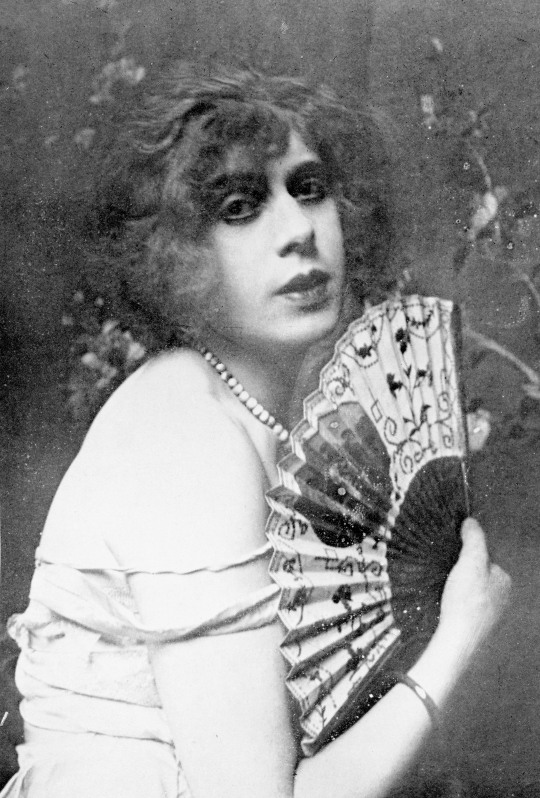
Lili Elbe, d'abord connue sous son nom de naissance Einar Magnus Andreas Wegener fut présentée officiellement en tant que sœur d'Einar. Après l'opération réussie en 1930, elle fit officialiser son changement de nom en Lili Ilse Elvenes et cessa de peindre. Le nom « Lili Elbe » lui avait été donné par la journaliste danoise Louise « Loulou » Lassen.
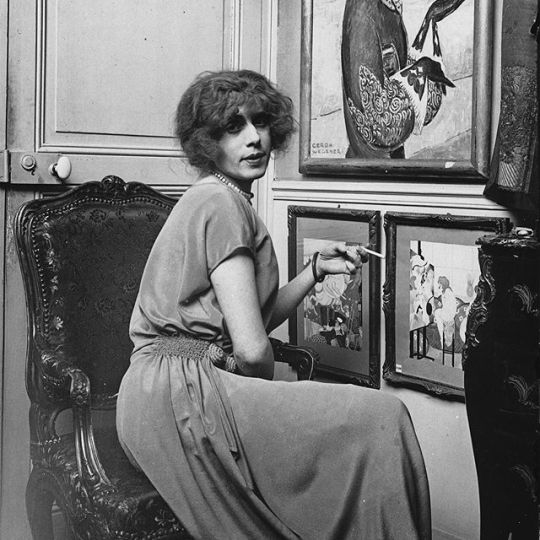
Lili Elbe meurt en 1931, trois mois après sa greffe d'utérus, sans doute à cause d'un rejet de greffe.
On situe parfois la naissance de Lili Elbe en 1886, mais cela provient d'un livre comprenant certains faits modifiés dans le but de protéger l'identité des personnes impliquées. Les références factuelles à la vie de son épouse Gerda Gottlieb indiquent que l'année 1882 est correcte, puisque le mariage a eu lieu en 1904, durant leurs années d'études à l'université.
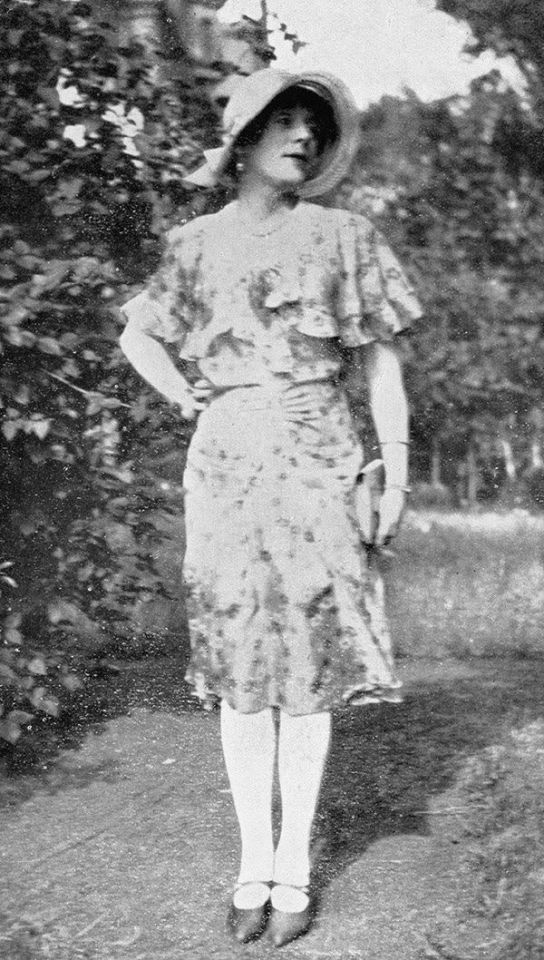
Il est possible que Lili Elbe ait été une personne intersexuée. Certains rapports indiquent qu'elle avait des ovaires rudimentaires et qu'elle aurait pu être porteuse du syndrome de Klinefelter.
2 notes
·
View notes
Photo

Lili Ilse Elvenes (28 December 1882 – 13 September 1931), better known as Lili Elbe, was a Danish transgender woman and one of the first identifiable recipients of sex reassignment surgery. Elbe was born Einar Magnus Andreas Wegener and was a successful painter under that name. Her autobiography, Man into Woman, was posthumously published in 1933. (https://en.wikipedia.org/wiki/Lili_Elbe)
1 note
·
View note
Text
Who did Gerda Wegener marry? Did Lili and Gerda love each other?
Who did Gerda Wegener marry? Did Lili and Gerda love each other?
Wegener was best known for her fashion illustrations and later her paintings that pushed the boundaries of gender and love of her time.
Lili Ilse Elvenes, better known as Lili Elbe, was a Danish painter and transgender woman, and among the early recipients of sex reassignment surgery.
Lili Elbe.Photo by THE MY HERO PROJECT
Wegener died on 28 July 1940, in Frederiksberg, Denmark whereas Lili died…
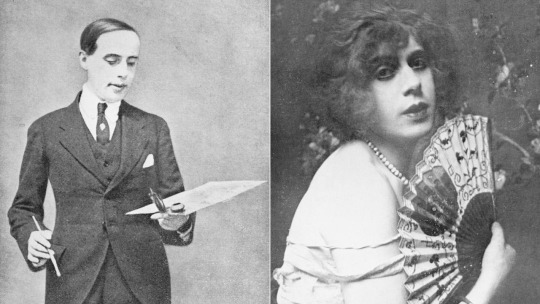
View On WordPress
0 notes
Photo
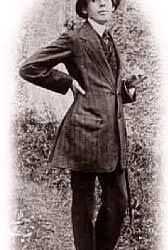
In this series we look at various heroes and advocates of the LGBTQIA family. In this article we focus on Transgender female, Lili Ilse Elvenes One of the first known sex reassignment surgeries of modern times, was that of Lili Ilse Elvenes better known as Lilli Elbe, she was a transgender woman from Denmark and was born Einar Magnus Andres Wegener. Under her birth name she became a successful artist. However she felt that it was a part of her former life identity to continue painting. Read more at https://pridematters.wordpress.com/2016/01/21/lilli-elbe-the-danish-girl/amp/
1 note
·
View note